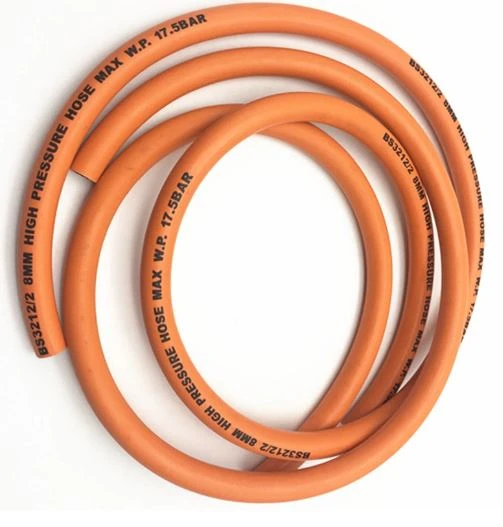Innovative Solutions for Efficient Lay Flat Irrigation Hose Systems in Agriculture
Exploring the Benefits of Lay Flat Irrigation Hoses in Agriculture
Irrigation plays a critical role in agriculture, ensuring crops receive adequate water throughout their growth cycles. With the evolution of farming techniques, the tools and equipment used for irrigation have also advanced. One such tool that has gained popularity in recent years is the lay flat irrigation hose. This article will explore the benefits, applications, and best practices of using lay flat irrigation hoses in modern agriculture.
Understanding Lay Flat Irrigation Hoses
Lay flat irrigation hoses are flexible hoses designed to lay flat on the ground when not in use. Unlike traditional rigid hoses or pipes, lay flat hoses are lightweight, portable, and easily transportable, making them highly versatile. They are typically made from durable materials such as PVC or polyethylene, which allow them to withstand pressure from water flow while being resistant to external elements, including UV radiation and abrasion.
Advantages of Lay Flat Irrigation Hoses
1. Ease of Storage and Transport One of the most significant advantages of lay flat hoses is their compact nature. When not in use, these hoses can be easily rolled up and stored, saving valuable space in storage areas. Their lightweight design also makes it simple for farmers to transport them from one field to another.
2. Adaptability Lay flat hoses can be easily laid out in various configurations, making them suitable for different irrigation methods. Whether for surface irrigation, drip irrigation setups, or even flood irrigation, these hoses can adapt to the specific needs of the crop or the terrain.
3. Cost-Effectiveness Compared to traditional irrigation systems like rigid pipes, lay flat hoses are generally more affordable. Their inexpensive manufacturing process and the ease of installation contribute to lower overall irrigation costs, which can be especially beneficial for small-scale farmers.
4. Efficient Water Distribution Lay flat hoses distribute water evenly across the field, enhancing irrigation efficiency. They can be used in conjunction with various emitters to ensure precise water application, minimizing waste and reducing the risk of overwatering, which can lead to root diseases.
5. Durability and Longevity Designed to withstand varying weather conditions, lay flat irrigation hoses can last several seasons when properly maintained. Their resistance to kinking and abrasion means farmers can rely on them for consistent performance over time.
Applications in Agriculture
lay flat irrigation hose

Lay flat irrigation hoses are suitable for a range of agricultural applications
. They are commonly used in- Row Crop Irrigation For crops like corn, soybeans, and vegetables, lay flat hoses can deliver water directly to the root zone, optimizing moisture levels and supporting healthy growth. - Fertigation Systems Farmers can integrate fertilizers with irrigation water using lay flat hoses, ensuring that essential nutrients are delivered directly to plants, enhancing nutrient uptake and efficiency.
- Field Drainage In regions prone to excess rainfall or water pooling, lay flat hoses can assist in managing water levels, preventing crop damage and soil erosion.
Best Practices for Use
To maximize the benefits of lay flat irrigation hoses, farmers should consider the following best practices
1. Regular Inspection Periodic checks for leaks, abrasions, or kinks can prevent water waste and ensure the system operates efficiently.
2. Proper Installation When laying out the hoses, ensure they are positioned in straight lines to minimize pressure loss and allow for optimal water flow.
3. Seasonal Maintenance At the end of the irrigation season, properly clean, dry, and store hoses to protect them from mold and damage during off-seasons.
4. Utilize Appropriate Connectors and Fittings Using the right size and type of connectors can enhance the hose's compatibility with the irrigation system, reducing potential leaks and ensuring a secure fit.
Conclusion
The rise of lay flat irrigation hoses marks a notable advancement in agricultural practices. With their affordability, versatility, and efficiency, they are transforming the way farmers approach irrigation. As the industry continues to evolve, embracing such innovative tools will be essential for sustainable farming and optimal crop yields. By adopting lay flat hoses, farmers can significantly improve water management and contribute to a more sustainable agricultural future.
-
Unrivaled Performance and Applications of PU Pneumatic Hoses and TubesNewsJun.11,2025
-
The Transparent World of Industrial Tubing and Hosing SolutionsNewsJun.11,2025
-
The Intricate World of Pneumatic Conduits: Tubes and HosesNewsJun.11,2025
-
The Dynamic Landscape of Pneumatic Conduits: Unraveling Key ComponentsNewsJun.11,2025
-
The Diverse Applications and Significance of Transparent PVC TubingNewsJun.11,2025
-
High - Pressure Pneumatic Tubing and Systems: An In - Depth LookNewsJun.11,2025














